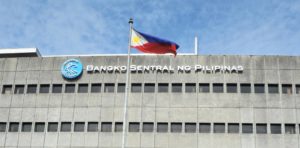The Bangko Sentral ng Pilipinas (BSP) has raised its overnight borrowing rate by 25 basis points (bps) to 2.25 percent effective May 20, as it finally starts to tighten money supply in the domestic economy in anticipation of further increases in prices of basic commodities.
The BSP’s key policy rate has been at a record low of 2 percent since November 2020 and analysts are expecting more increases in upcoming policy meetings of the Monetary Board (MB).
Still, BSP Governor Benjamin Diokno said on Thursday the pace and timing of further rate actions would be guided by data as opposed to other factors such as respective moves by other central banks like the US Federal Reserve.
Changing forecasts
Diokno said that, along with the key policy rate, the interest rates on the overnight deposit and lending facilities were raised by 25 bps to 1.75 percent and 2.75 percent, respectively.
“In deciding to raise the policy interest rate, the Monetary Board noted that the latest baseline forecasts have further shifted higher since the previous monetary policy meeting in March, indicating that elevated inflation pressures could persist over the policy horizon,” said Diokno, who chairs the MB.
The latest forecast now puts the average inflation in 2022 at 4.6 percent, breaching the upper end of the target band of 2 percent to 4 percent before easing back into that range in 2023 at 3.9 percent.
Last February, the baseline forecast was for 3.7 percent this year and 3.3 percent next year.
Putting upward pressure on the inflation outlook for both 2022 and 2023 are the potential impact of higher oil prices as well as the continued shortage in domestic food supply such as those of pork and fish.
Second-round effects
“The [MB] also observed the emergence of second-round effects, including the higher-than-expected adjustment in minimum wages in some regions,” Diokno said, referring to Metro Manila and Western Visayas where regional wage boards have approved increases.
The MB believes that raising the BSP’s policy interest rate now will help arrest further second-round effects—rising wages, transport fares and prices of other commodities—which would further build up expectations of even faster inflation.
Economic recovery
“As the economic recovery [in the Philippines] continues to gain traction, the BSP shall proceed with its plans for the continued gradual withdrawal of its extraordinary liquidity interventions and the start of the normalization of its monetary policy settings,” Diokno said.
Analysts are expecting further hikes in interest rates, with GoldmanSachs seeing the most hawkish picture and expecting increases in seven subsequent policy meetings to bring the key rate to 4 percent by the first quarter of 2023.
Rising policy rates prompt a similar increase in bank lending rates, which discourage borrowing. This, in turn, means less money circulating in the economy and less demand for goods and services—factors that ease upward pressure on inflation.


